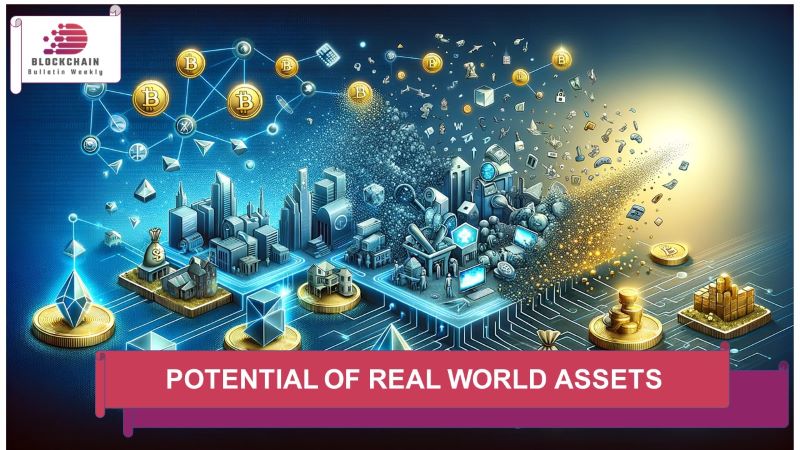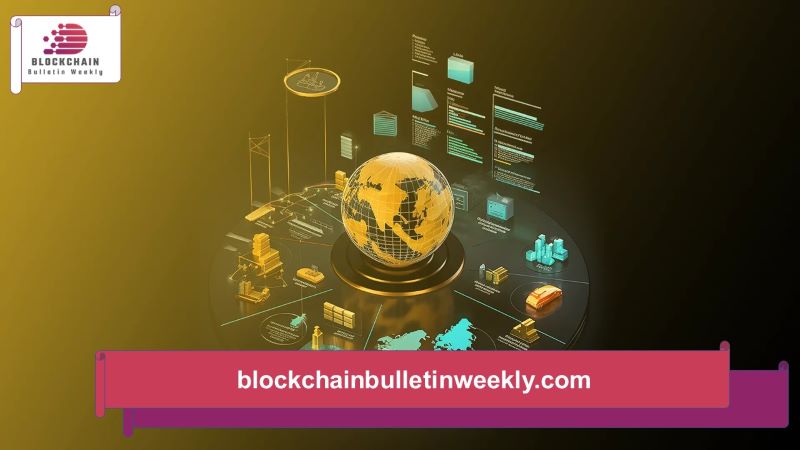The trend of tokenizing assets is revolutionizing the way we own and trade property. By leveraging blockchain technology, the potential of real world assets has been unlocked in unprecedented ways, opening up new avenues for investment and business.
Defining Real-World Assets
Real-world assets, also known as tangible assets, are physical possessions that exist in the physical world. They are valuable items that can be owned, used, and traded.
Common examples of real-world assets:
- Real estate: Land, houses, apartments, buildings, etc.
- Personal property: Cars, motorcycles, household items, jewelry, artwork, etc.
- Commodities: Gold, silver, precious metals, agricultural products, raw materials, etc.
- Other assets: Machinery, equipment, animals, etc.
Key characteristics of real-world assets:
- Tangible: They can be seen, touched, and felt.
- Valuable: They provide economic benefits to the owner.
- Ownable: The owner has the right to use and make decisions about the asset.
- Transferable: They can be bought, sold, exchanged, or inherited.
Distinction from intangible assets:
While real-world assets are physical, intangible assets are rights or interests that have no physical form, such as copyrights, trademarks, patents, stocks, bonds, digital currencies, etc.
The potential of real world assets in various fields, especially when tokenized and integrated with blockchain technology, offers exciting opportunities for investment, trading, and fractional ownership. By bridging the gap between the physical and digital worlds, real-world assets can become more accessible and liquid, unlocking new possibilities for asset management and financial markets.
The Concept of Tokenization of Assets
Tokenization of assets is the process of converting a physical asset (such as real estate, artwork, gold, etc.) into a digital asset (token) on a blockchain platform. This token represents ownership rights or interests in the underlying asset, highlighting the potential of real world assets in the digital economy.
Why is Tokenization of Assets Necessary?
Tokenization of assets enhances liquidity by breaking them into smaller tokens, making transactions faster and more accessible to a broader range of investors. It also ensures transparency, as all transactions are recorded on the blockchain, reducing fraud risks.
This process opens up investment opportunities to individuals with smaller capital, making high-value assets more accessible. Additionally, tokenization creates new markets by enabling investment in diverse and previously hard-to-trade assets, unlocking the full potential of real-world assets.
The Tokenization Process Generally Includes the Following Steps:
The tokenization process typically involves several key steps. First, the asset is assessed and valued to determine its true worth, which is then divided into corresponding tokens. Next, a smart contract is created on the blockchain to manage the ownership rights and terms related to the tokens.
Once the contract is in place, the tokens are issued to investors. Finally, the tokens are securely stored in the digital wallets of the owners, ensuring safekeeping and easy access.
Applications of Tokenization
Tokenization, a relatively new concept but gaining rapid popularity, has opened new doors for asset ownership and trading. By converting physical assets into digital tokens, tokenization has been making a profound impact on various sectors.
Real Estate
In real estate, tokenization enables fractional ownership, allowing multiple people to co-own a property by dividing it into smaller tokens. This increases liquidity and broadens investment opportunities. Transactions are recorded on the blockchain, enhancing transparency and making them easily traceable.
Additionally, by removing intermediaries, tokenization helps reduce transaction and asset management costs, making the process more efficient.
Art
In the art world, tokenization provides proof of ownership by assigning a unique code to each tokenized artwork, verifying its origin. It also increases liquidity by allowing artworks to be divided into smaller tokens, broadening investment opportunities.
Additionally, the blockchain records all transactions related to the artwork, enabling easy tracking of its transaction history and potentially increasing its value over time.
Commodities
In commodities, tokenization enhances transparency by recording the origin, quality, and transportation details of goods on the blockchain, ensuring traceability. It also helps reduce fraud by preventing counterfeiting and imitation. Additionally, tokenization increases transaction efficiency, enabling faster and more streamlined buying and selling processes.
Securities
Tokenization of securities boosts liquidity by enabling 24/7 trading, which also reduces transaction costs. It enhances transparency by recording all information on the blockchain, lowering risks and increasing trust.
Moreover, tokenization expands the market by allowing small investors to easily participate, making the securities market more accessible.
Other applications
Tokenization has various other applications, such as carbon tokenization, which enables the tracking and trading of carbon credits, supporting sustainable development. Intellectual property tokenization helps protect IP rights and opens up new markets for creators.
Additionally, other rights, like rental or service usage rights, can be tokenized, offering innovative ways to manage and trade these assets.
The potential of real world assets when tokenized is immense, offering new opportunities for investment, trading, and economic growth.
Potential of Real World Assets in the Age of Asset Tokenization
The development of blockchain technology and asset tokenization has greatly increased interest in real-world assets. Tokenization enhances liquidity by dividing large assets into smaller, more accessible tokens, enabling more investors to participate.
It ensures transparency by recording all transactions on the blockchain, building trust. Blockchain technology also provides high security, reducing fraud and centralization risks. Tokenization offers diverse investment opportunities, allowing investors to access various assets with lower capital requirements.
It creates new markets by tokenizing intangible assets like copyrights and patents. Ultimately, tokenization drives innovation, improving efficiency and encouraging growth in financial markets.
The potential of real world assets is immense, offering new investment opportunities, liquidity, and innovation. Integrating blockchain and smart contracts unlocks greater efficiency and transparency, making it crucial to embrace these changes to fully realize their value in the digital economy.
Stay ahead in the digital economy – embrace innovation and start investing today!



